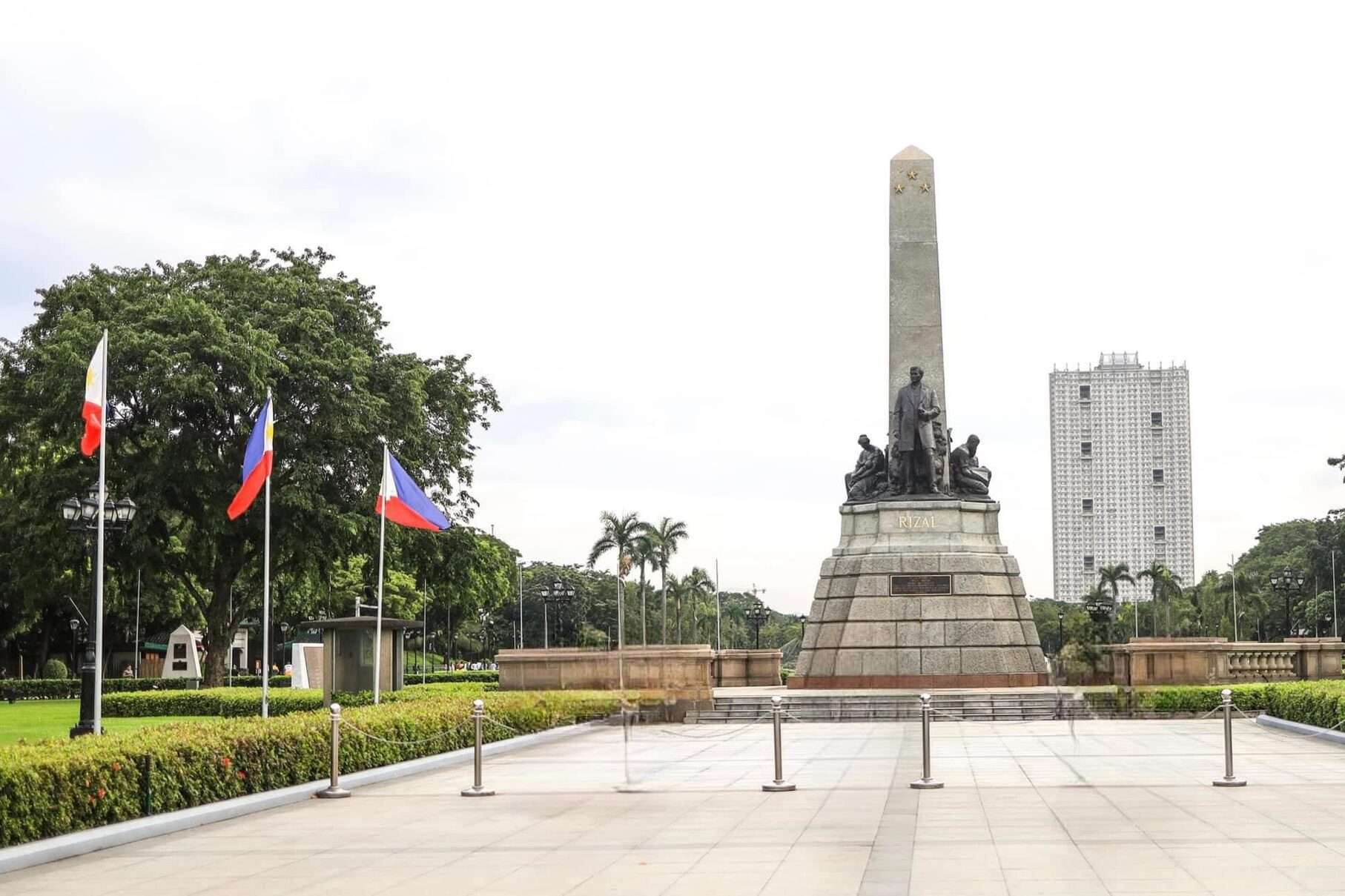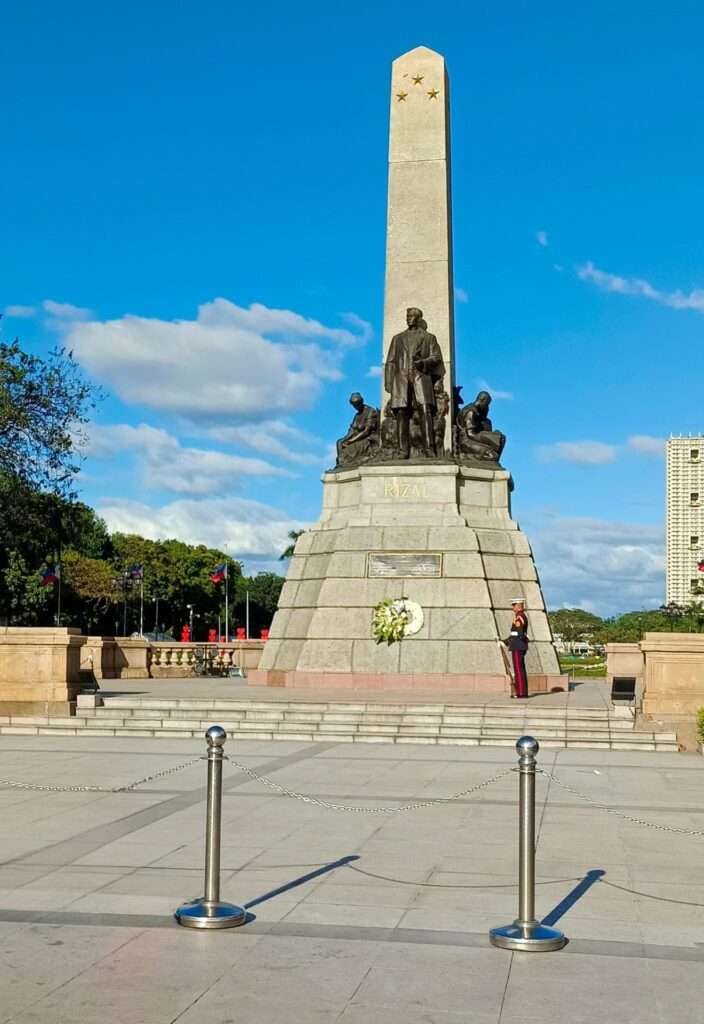Rizal Park Overview
Rizal Park, commonly known as Luneta, stands as a testament to Filipino nationhood and serves as one of the most significant and historic urban parks in the Philippines.
This place holds many stories about our history, from heroes with great contributions to our country, to their battles and their deaths. Not only that, it is a park where you and your family can have a picnic, and finally, restrooms are free of charge. Additionally, the park appears noticeably cleaner compared to our last visit a few years back. I brought along my friends so they could enjoy the park’s ambiance and learn about its rich history, and they’re thoroughly enjoying it. We’re planning to return soon to explore the National Museum and the Planetarium located within the Rizal Park complex.
Table of Contents
History and Significance
Originally named Bagumbayan during the Spanish colonial period, Rizal Park’s historical significance is deeply rooted in its association with Jose Rizal, the Philippines’ national hero.
His execution in 1896 sparked the nation’s quest for independence, making the park a focal point for Filipino identity.
The park is also home to the Rizal Monument, which contains the hero’s remains and a bronze sculpture, symbolizing his dedication to the cause of Filipino freedom.
Geographical Location
It is located in the heart of Manila and next to the scenic Manila Bay, Rizal Park covers a vast area of 58 hectares (140 acres), making it one of the largest urban parks in the city.
Strategically located in Ermita, Manila, the park’s accessibility from Downtown Manila is facilitated via R-9 and Taft Avenue in under 20 minutes.
The park’s central location makes it a popular spot for both locals and tourists, offering a peaceful green escape from the busy city life.
Rizal Monument

The Rizal Monument in Manila serves as a testament to Dr. José Rizal, the Philippines’ national hero, remembering his patriotism and his ultimate sacrifice during the Spanish colonial period. It stands as a historical symbol and a focal point for honoring his legacy.
Design and Symbolism
The Rizal Monument’s design captures the heroism and the life’s work of José Rizal.
A bronze sculpture represents Rizal in a calm yet resolute stance.
The figure is strategically placed in front of an obelisk reaching a height of 12.7 meters or 42 feet.
The obelisk itself is a commonly used symbol in monuments, signifying the soaring human spirit and the quest for national upliftment.
The pedestal of the monument holds a significant element; within its stone base, the remains of José Rizal are interred.
This indicates the site as not only commemorative but also as Rizal’s final resting place, filled with deep respect and veneration for his role as a Filipino patriot.
Adjacent to the sculpture, an inscription of his final poem “Mi Ultimo Adios” (My Last Farewell) reminds visitors of Rizal’s love for his country and his lasting contribution to Filipino identity.
Surrounding Features
Around the Rizal Monument, there are many things that highlight its importance in history.
The monument is guarded by ceremonial sentinels, known as the Kabalyeros de Rizal, adding solemnity to the reverence it commands.
The wider area within Rizal Park, where the monument sits, is a space accommodating various symbolic markers and plaques denoting significant moments related to Rizal’s execution and notable life events.
In the vicinity, manicured gardens and paved walkways allow for a conducive environment for reflection and appreciation of the historical context surrounding the Rizal Monument.
The entire setting of the monument amidst the greenery of Rizal Park serves not only as a memorial but also as a place of learning and understanding the Filipino nation’s history and the sacrifices that shaped it.
Attractions and Facilities

Rizal Park offers a diverse range of attractions and facilities that cater to history buffs, nature enthusiasts, and cultural connoisseurs alike. Visitors can indulge in the beauty of natural spaces, explore rich cultural venues, and attend a variety of entertaining events.
Gardens and Open Spaces
Rizal Park has beautiful gardens and big open areas that provide a serene respite in the heart of Manila.
Notably, the Noli Me Tangere Garden carries historical significance, being named after the novel by the park’s namesake, José Rizal.
The Orchidarium and Butterfly Pavilion showcase the country’s rich floral and insect fauna, while both the Chinese and Japanese Gardens offer themed landscaping and a peaceful atmosphere for reflection and relaxation.
The Central Lagoon, with its dancing fountain, is a beautiful centerpiece, ideal for a relaxed walk or a picnic.
Museums and Cultural Venues
Within the park’s boundaries, history and culture come alive at various venues.
The National Museum of Natural History presents a comprehensive look at the Philippines’ natural heritage, from its flora and fauna to its geological makeup.
Adjacent cultural venues like the Rizal Shrine, dedicated to the life and works of the national hero, enrich visitors’ understanding of the country’s past.
Meanwhile, the Open-Air Auditorium serves as a hub for performing arts, where events like the “Concert at the Park” series are hosted.
Entertainment and Events
Rizal Park isn’t just peaceful; it’s also a lively spot for fun and activities.
The open spaces and ornamental gardens often serve as a backdrop for a variety of events, from formal ceremonies to public concerts and performances.
The park’s paved walks lead visitors to regularly scheduled entertainment options, which include live music and dance at the Open-Air Auditorium.
With facilities that cater to both passive and active recreation, Rizal Park provides numerous ways for visitors to engage with the park’s dynamic environment.
Accessibility and Transportation

Rizal Park in Manila is a prominent and easily accessible destination, drawing visitors for its historical significance and central location. The park is well-connected by a network of major roads and a variety of public transport options, ensuring ease of access for both locals and tourists.
Main Thoroughfares and Access Points
The primary access points to Rizal Park include Roxas Boulevard, Taft Avenue, and Kalaw Avenue.
These major thoroughfares serve as the park’s gateways, with Roxas Boulevard being a scenic coastal road offering glimpses of Manila Bay.
Taft Avenue intersects with various roads leading directly to the park. Meanwhile, Kalaw Avenue provides additional access, connecting to other parts of Metro Manila.
For visitors driving their own vehicles, ample parking is available in the vicinity of the park.
Public Transport Options
Rizal Park is accessible by several modes of public transportation:
- Bus: Multiple bus routes pass near the park, with stops along Roxas Boulevard, Taft Avenue, and Kalaw Avenue.
- Jeepney: These iconic Filipino minibuses run along various routes that traverse the areas around Rizal Park.
- Map Assistance: Visitors can utilize maps and mobile applications to navigate the transport routes and find the best way to reach Rizal Park.
Visitors can also travel to nearby attractions such as Baclaran, known for its large market and church, or Manila Ocean Park by hopping on a jeepney or bus from the park.
The availability of various transport options makes traveling to and from Rizal Park a convenient experience.
Historical and Cultural Context

Rizal Park, also known as Luneta Park, stands as a monumental space in Manila, rich in historical significance. It’s like a painting that shows the Philippines’ fight for freedom and the ongoing process of remembering and thinking about it.
Philippine Revolution and Independence
In the late 19th century, Rizal Park became a main point of political activity, particularly during the 1896 Philippine Revolution against the Kingdom of Spain.
The park is named after Dr. José Rizal, whose execution on December 30, 1896, ignited nationalistic fervor that eventually led to the Philippine Declaration of Independence from Spanish rule on June 12, 1898.
Significant historical entities at Rizal Park:
- Bronze statues and busts: Memorials honoring Filipino heroes who played vital roles in the nation’s history.
- Rizal Monument: The central bronze sculpture of Dr. José Rizal, a notable figure in the movement against Spanish colonial authorities.
- Walled city of Intramuros: Located near the park, a historical fortified area from Spanish colonial times.
- National Museum of the Philippines: Situated next to Luneta and houses important cultural artifacts.
Notable Events and Commemorations
Over the years, Rizal Park has been the site for various events of national significance.
Key events held at Rizal Park:
- Philippine independence: Annual celebrations every June 12th, commemorating the country’s independence.
- Political rallies: Historical gatherings such as the protest that led to the ousting of Ferdinand Marcos and the subsequent EDSA Revolution which catapulted Corazon Aquino to the presidency.
- United Nations Day: It has been a venue for ceremonies and activities aligned with the ideals of the United Nations.
Frequently Asked Questions

This section aims to provide concise answers to common questions about Rizal Park, an iconic spot in Manila that holds great historical significance.
What is the history of Rizal Park?
Rizal Park, also known as Luneta, has been a pivotal site in Philippine history. It was the location of the execution of José Rizal on December 30, 1896, which subsequently ignited the Philippine Revolution against Spanish rule.
Where is Rizal Park located in Manila?
The park is found along Roxas Boulevard in Manila, adjacent to the historic Walled City of Intramuros. It’s on the eastern shore of Manila Bay, which enhances the park’s scenic setting.
Is there an entrance fee to visit Rizal Park?
As of the knowledge cutoff in 2023, Rizal Park does not charge an entrance fee. This makes it accessible to the public without cost for leisure and educational visits.
What are some notable tourist spots in Rizal Park?
Within Rizal Park, tourists can visit several important attractions. These include the Rizal Monument, which houses the hero’s remains, the Independence Flagpole, and the beautifully landscaped gardens that are significant for various historical events.
What are the key features of Rizal Park?
Covering approximately 60 hectares, Rizal Park features open lawns, ornamental gardens, and paved walks. The park is a hub of Filipino pride with its monuments, including the prominent Rizal Monument, and also hosts significant public events.
Who is interred at the monument in Rizal Park?
The Rizal Monument in Rizal Park holds the interred remains of Dr. José Rizal, the Philippines’ national hero. This monument is not only a grave but also a symbol of the nation’s struggle for independence.
